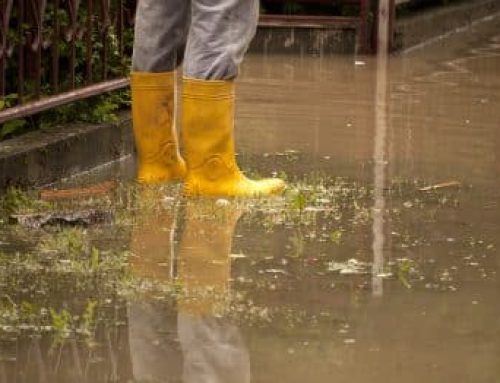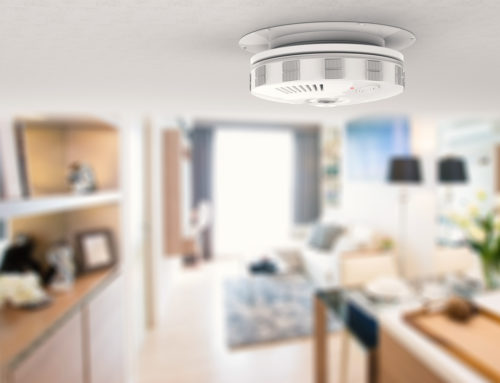Did you know that damage from the weight of snow, ice, or sleet is only covered under certain policy formats? For those who invest in more northern or mountainous areas, it is important to know which type of coverage you will need for winter storms. Learn how to protect yourself from these winter perils and find out which coverage is best for protecting your property from snow, ice, and sleet.
Welcome to our “Is It Covered?” series. For a fuller introduction of the series, read HERE. We hope these quick reads will help you increase your understanding of your insurance coverage, clear up confusion and help you avoid preventable losses! Please bear in mind that insurance policies may vary, so always check your own policy for language specific to your covered property. If you have coverage questions, don’t hesitate to call your agent who will be happy to assist you!
Does My Insurance Cover Snow Damage?
The Basic, Broad, and Special Forms on which property policies are written offer different levels of coverage. Basic and Broad Forms are “named peril” policies, meaning perils must be listed within the policy to be covered. Special Form is written on an “open perils” basis, meaning that unless that peril is excluded from the policy, coverage is included. Damage from the Weight of Snow, Ice, or Sleet is not covered under the Basic Form, but only under the Broad and Special Form formats.
Exceptions to Weight of Snow, Ice, or Sleet Coverage
Even if you have coverage for Weight of Snow, Ice, or Sleet, that coverage still does not typically extend to certain items. Stipulations of the coverage may look like this:
“This does not include loss to awnings, canopies, fences, pavements, patios, swimming pools, foundations, retaining walls, bulkheads, piers, wharves or docks when such loss is caused by freezing, thawing or by the pressure of the weight of ice or water, whether driven by wind or not.”
How Much Snow or Ice is too Much for Your Roof to Bear?
Unless the roof structure is damaged or decayed, most residential roofs can potentially support up to 20 lbs. per square foot of snow before they become stressed. Ice and snow tend to more readily accumulate on low slopes and flat roofs over porches or parts of the home that are next to a taller section of the house.
Just two feet of old snow and two feet of new snow could weigh as much as 60 lbs. per square foot, which is way beyond the typical snow load capacity of most roofs. Keep in mind the closer it is to freezing, the more dangerous the snow on your roof becomes as these “higher” temperatures typically produce wetter, heavier snow.
Why Do I Need to be Concerned about Ice Dams?
Ice dams are a common winter hazard. Ice dams form when snow on the surface of the roof melts and then quickly refreezes. This can put a heavier load on your roof decking and trusses and can also cause water to seep in between poorly constructed soffits. This ice buildup can cause roofs to sag and may even cause a collapse.
Is There a Way to Add Coverage for Weight of Snow, Ice, or Sleet? And, Does it Cost Extra?
Yes, you can make sure you have coverage for the Weight of Snow, Ice, or Sleet by purchasing Broad or Special Form coverage. These two forms do cost more than Basic Form coverage, but when you consider how many more perils are insured, it’s easy to understand the difference in pricing.
What Does the Technical Lingo for This Exclusion Look Like in My Policy?
Sample policy language may look like this:
“When Basic is shown in the Declarations, Covered Causes of Loss means the following…
Windstorm or Hail, but not including:
- Frost or cold weather;
- Ice (other than hail), snow or sleet, whether driven by wind or not”
As insurance policies may vary, please check your own policy for language specific to your covered property.
How Much Can This Type of Damage Cost Me?
Losses resulting from the Weight of Snow, Ice, or Sleet can vary from a few hundred dollars to tens of thousands depending upon the extent of the water intrusion or collapse. Prolonged moisture can also cause catastrophic mold damage if not attended to within 24-48 hours. If you own a multi-unit property, adjacent units could also become casualties. Lastly, a tenant or one of their guests could be seriously injured by a collapse which could lead to long-term medical bills. The falling materials could even kill someone.
What Can I Do to Protect Myself from Snow Damage?
First, know what is in your policy: Read the sections of your insurance policy that address Weight of Snow, Ice, or Sleet coverage. It is important to know both what you are and are not covered for. If you don’t understand your coverage or have questions, don’t hesitate to ask your agent, who will be happy to help you!
Remove snow to prevent a roof collapse: Since the weight of snow can vary depending upon the amount of water it contains, play it safe. You may want to remove the snow at two feet if you have a newer, pitched roof that is in decent shape. If your roof is older, your property has a flat porch roof or if you own a manufactured home, you’ll want to be even more conservative. In those cases, you may want to use 12 inches as your cue for snow removal. If you can’t safely remove the snow with removal tools from the ground, it’s best to call in a professional roof snow removal service. Make sure they are properly licensed and insured!
Insulate your roof: Ice dams can be prevented. The key is to make sure you have a well-insulated attic. This means sealing any air leaks, properly installing correctly-rated insulation, and accurately venting your roof. These steps can help encourage air movement and prevent heat from building up. The vents also help eliminate excess moisture which can cause mold and other health hazards.
Prevent mold: Mold can grow very quickly when your property sustains water damage. In fact, it can grow within 24-48 hours after a water event. Add heat to the equation and you have a recipe that mold loves. As such, it is imperative after a storm to dry out your property as quickly as possible. You may need to call in a water mitigation company to help if the job is a large one. Mold is typically excluded from most property policies so swift action to remediate any mold issue is critical!
Make sure your tenant understands their personal property isn’t covered by your insurance: Include a clause in your lease requiring tenants to carry renters insurance – and make sure you enforce it. Let them know any insurance you carry on the property as the owner does not apply to their personal belongings. Impress upon them the importance of reporting any hazardous conditions on the property to you or your property manager immediately. You may want to include a section in your lease where the tenant acknowledges their understanding of these items. Another option is to purchase a product like our Tenant Protector Plan that does provide content coverage for your tenant.
For more information on how to prevent damage in winter storms, read “Stop Ice Damage by Doing These Two Things.”






